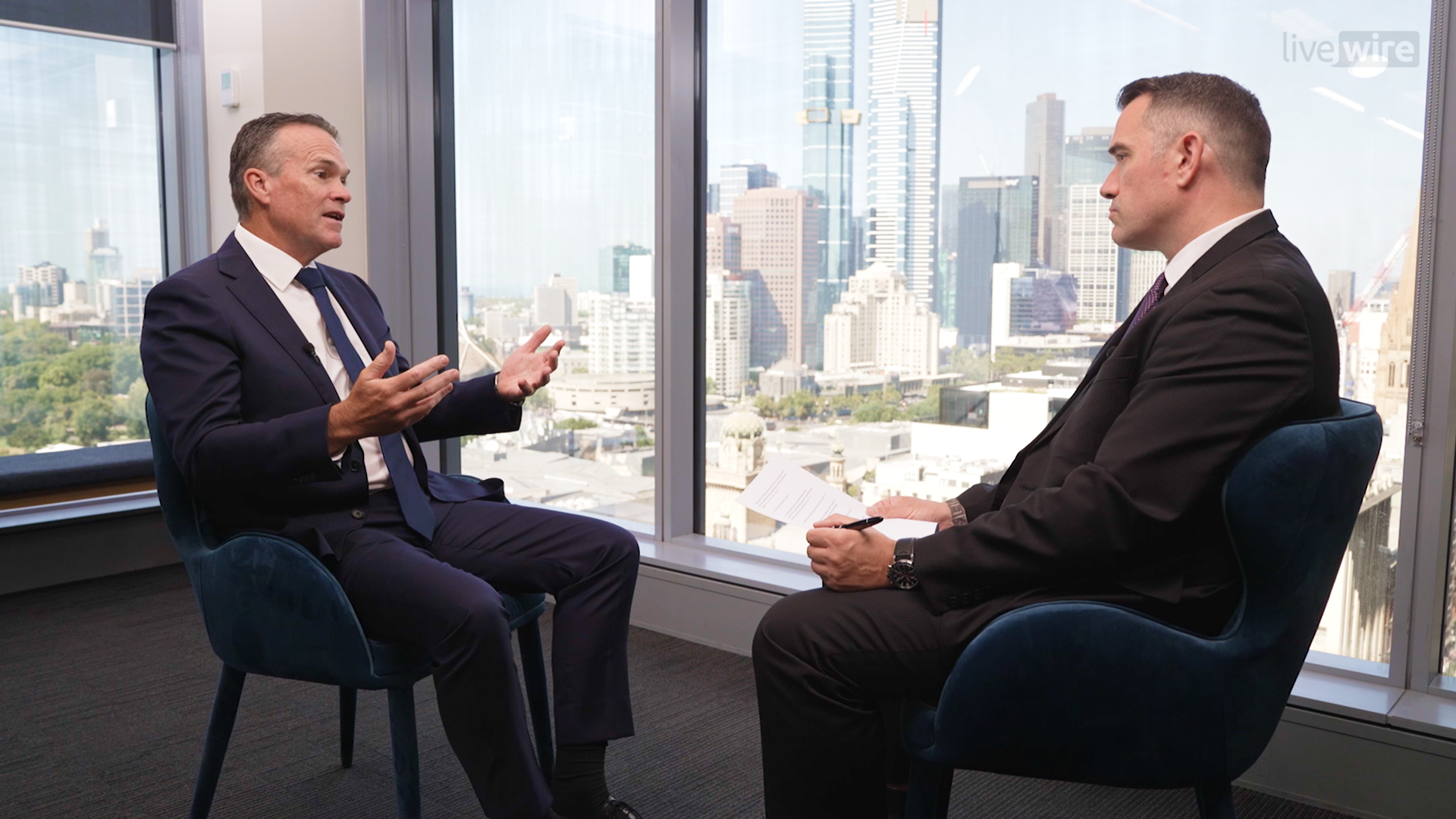The AT1 phase-out: Challenges and opportunities for fixed income investors
The AT1 hybrids market has long played a crucial role in Australia's banking system, providing a secondary source of equity capital in times of financial stress. However, with regulatory changes set to phase out them out over the next seven years, investors and institutions alike must navigate a shifting landscape.
In the following discussion, Roy Keenan, Head of the Yarra Enhanced Income Fund, shared his insights on the market’s evolution, the implications of APRA’s decision, and where investors should be looking next.
Reflecting on the regulatory overhaul, Keenan expressed his disappointment, stating;
“As a hybrid lover, I’m absolutely devastated and disappointed the market is going to disappear.”
Despite the challenges, Keenan sees opportunities ahead, particularly in corporate hybrids and Tier 2 Capital.
As AT1 hybrids roll off, he urges investors to carefully assess risk-reward dynamics and seek professional guidance to avoid potential pitfalls.
With major banks adjusting to the new capital framework, the future of bank funding and fixed-income investing is entering a significant transition period—one that could reshape the way both institutional and retail investors approach the market.
Edited transcript
Chris Conway: Hello and welcome to Livewire Markets. Today I am sitting down with Roy Keenan. Roy is the head of the Yarra Enhanced Income Fund and he's going to be chatting to us today about the changes in the AT1 hybrid market. Roy, before we get to the nitty-gritty, can you just set the scene for us a little bit and explain how this part of the market, the AT1 hybrid market, started and evolved and what its purpose was for both the banks and investors?
Roy Keenan: I could probably take an hour to go through the whole history. But to condense it down, it goes back to the start of my career when both Westpac and ANZ got into a bit of difficulty with their commercial lending in the nineties. And I remember working back at JBWere at that time, we did the converting preference shares. Through time, we've gone through this evolution where we actually have income securities, reset securities, to where we are today with mandatory convertibles.
What hybrids have always done is provided that second source of equity credit, and always be there when the banks are in times of need to convert these hybrid securities into equity.
And during the Global Financial Crisis, those hybrids proved not to be equity-like, they were more debt-like, and to where we are today with the securities we've got, they're more equity-like and have that ability to convert to equity in times of stress for a bank.

Chris Conway: Roy, you talked there a little bit about how hybrids have evolved and been used. What are the distinct features of AT1 hybrids?
Roy Keenan: So the ones we have today are a lot different than the ones 30 years ago. Today, those securities sit behind what we call subordinated debt - Tier 2 - and sit above equity. The key feature of those securities is that they have a capital trigger, which means if the capital of the bank falls to five and one-eighth (or 5.125%), then there is a potential for these securities to be converted to equity in times of stress to support the bank's equity base. They also have the ability to convert to equity in non-viability, so in the sense that if a Credit Suisse / UBS style event ever happened in Australia, the securities can be converted to equity. They also have the feature that they can miss their coupons. Senior bonds of a bank, the coupons or distributions are actually guaranteed - so they can't miss them. But in the hybrid AT1 market, they can be missed.
Chris Conway: Roy, I know you're not a regulator, so I'll ask this question hypothetically. The plans announced by APRA - what do you think the regulator is trying to achieve with these plans to scrap the AT1 hybrid market?
Roy Keenan: I have to say, as a hybrid lover, I'm absolutely devastated and disappointed the market is going to disappear over a seven-year period.
What's really important to understand, I think, is that hybrid securities, the AT1s, whilst they do have those features I mentioned earlier - conversion to equity, etc - we're talking about really good quality credit. Having a great regulator like APRA, ultimately the risk of something bad happening is low and I think these securities were a lot less risky than what was embedded in their features.
Ultimately, I think what happened last year with Credit Suisse and UBS, or any other bank, is that when a bank gets into trouble and remediation is undertaken to fix the situation, it has to be timely and quick. And I think what APRA has said is that the current way the AT1 market is structured, being mandatory convertible to equity, which is a going concern type capital, is just too complicated to enable a really fast resolution. It involves retail and institutional investors and, I think, ultimately, they've gone from this ‘going concern’ capital to a ‘gone capital’ sort of structure.
These things generally happen on a weekend and you want it sorted by Monday, because you don't want Mums and Dads queuing up and taking the money out of the bank. You need to establish that confidence in the system.
Chris Conway: Roy, what does it mean for AT1 hybrids that are set to roll over this year - the immediate problem?
Roy Keenan: The first thing is that originally, when the paper come out in 2023, it was a bit unknown what would happen with the securities in 2025 and '26. And what's been made a lot clearer from APRA in their letter to the banks in December 2024, is that they've basically said if your risk capital calculation is under one and a half per cent, so the amount of AT1 you have versus the risk-weighted assets you have, then basically those banks who are above 1.5% will not be allowed to roll their securities.
So in our calculations and analysis of that, we have about $11.3 billion of AT1 being called in 2025 and 2026. So what happens from there is that the banks that we see that won't be able to roll their securities in those years out to 2032 will be NAB and Westpac. Both CBA and ANZ, and Macquarie Bank, they do fall below 1.5%. So there is scope for them to issue depending on what you calculate risk-weighting assets at - there's probably $1.4-$2 billion dollars of potential securities rolling in 2025-26. The timing of that is unclear, but APRA has asked the banks to actually put their plans to APRA by 31 March of this year.
Chris Conway: Roy, another wrinkle, as I understand it, is the reclassification by APRA of AT1 hybrids to Tier 2 Capital. Can you just take us through what this means and what the potential impact might be?
Roy Keenan: So, this is all being introduced effective January 1, 2027. So, from that point, all existing AT1s will be included as Tier 2 from APRA's and the bank's perspective. That's well and good from the issuer and the regulator’s point of view, but from the point of view of an investor like ourselves or anyone else, these securities essentially have only changed in nature by one thing. And that's because APRA has said all the securities post-2027 have to be called. So, what it has done is remove that unknown of what we call ‘extension risk’, and we have surety that these securities have an end date.
What doesn't change with these securities becoming Tier 2 from APRA and issuers point of view, is that these securities are still issued under a PDS, they still have those features I mentioned earlier - capital trigger, non-viability, and the ability to miss coupons.
Investors need to think about that when comparing the risk-reward in these securities and how they're priced versus other instruments in the bank capital structure.
Chris Conway: Roy, you've touched on it there, but what should investors be considering as the AT1 market rolls off and they look to deploy capital?
Roy Keenan: The most important thing is to think about risk-reward. This market doesn't disappear overnight. It's in a gradual decline, and the last securities are going to be called back in 2032.
If I think about it from our perspective, we still see it as an investable market, we'll be buyers and sellers in that market. I think you've got to really understand what the alternatives are out there.
Being very mindful that if you're chasing yield, you've got to be really thinking about the risk that is stacked up against that yield. And I'm just worried, especially for retail investors that don't have that sophistication, they probably might fall into traps that they really shouldn't.
Chris Conway: And how might they avoid those traps?
Roy Keenan: The perfect thing is to come to a fund manager like us. Whilst this is disappointing for the hybrid market, I think this is good for a manager like us.
We've got a long history of producing good quality returns. The AT1 market is only just one segment of my fund, the Yarra Enhanced Income Fund.
We still have other ways to generate quality returns. Just recently, we've seen a really big resurgence in the corporate hybrid market. I think, particularly, that's one market that will be an alternative for the AT1 market disappearing over time.
Chris Conway: Roy, again, you've touched on it there, but with AT1 hybrids being phased out, where else will you be looking for opportunities?
Roy Keenan: It's going to be an interesting period. We're obviously dealing with President Trump coming in and every day seems to be a different day in markets at the moment. The actual AT1 market is disappearing, but it's being replaced with a similar amount of Tier 2. So the investable universe for us doesn't really change, it's just moving up the capital structure in a sense from a fixed income investor's point of view. So we see lots of those opportunities.
Corporate hybrids, we're really positive on that sector. We think that the REIT sector will be one of the sectors that will be issuing in that market, and I think it'll play a really important part in the energy transition.
We've recently seen AusNet do a deal. If Australia's going to progress to net-zero, that's going to be a really big capital task for energy and the transition companies, and we think corporate hybrids will play a part in that capital raise and that movement to net-zero.
Chris Conway: Roy, thank you so much for sitting down and taking us through what is obviously a complex situation. You've explained it fantastically well, thank you.
Roy Keenan: Thank you.
Timecodes
0:00 - Intro
0:33 - The evolution of AT1 hybrids
1:29 - What are the distinct features of hybrids?
2:38 - Why the changes in the AT1 market?
4:16 - Rollovers this year and next - what's the story?
5:54 - Reclassification by APRA of AT1 hybrids to Tier 2 Capital
7:13 - What investors need to know
7:59 - Avoiding the traps
8:38 - Where are the new opportunities?
Access to regular, stable income
The Yarra Enhanced Income Fund invests in high-yielding credit and hybrid securities to deliver superior returns compared to traditional cash management and fixed income investments. Learn more via the Fund profile below, or by visiting Yarra Capital's website.


5 topics
1 fund mentioned
2 contributors mentioned

